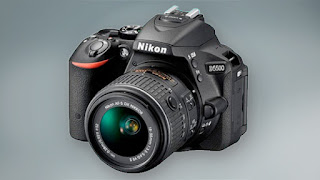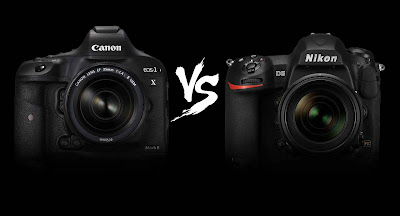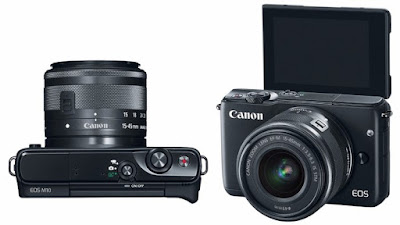
Nikon D5500 vs Sony A68. A new comparison
Actually, there are many options for beginner photographer to choose new
DSLR camera. You can choose one of the best camera in entry-level segment. In
addition to the Canon EOS 750D, you can compare the Nikon D5500 vs Sony A68. Both
Nikon D5500 and Sony A68 cameras have 24.0MP APS-C sensors. Both of these DSLR
camera you can rely on for everyday photography, whether indoors or outdoors.
You can also maximize the camera to make a video in full-HD resolution with
ease.
If you compare the D5500 with Nikon D5300, the design of the D5500 has
changed for the better. The D5500 also features Nikon's latest Expeed 4 image
processing engine. This camera also has a compact size, smaller and lighter, so
it is comfortable to use while on vacation to anywhere.
The D5500 is equipped with multi-CAM 4800DX autofocus system 39 points, the
2016 pixel RGB metering sensor, used for 3D traking subject in AF-C, radius
sensitivity reaches ISO 100-25, 600; continuous shooting at a rate of 5 frames
per second, reaching the maximum shutter speed 1/4000 sec, and an LCD display
touch screen of 3.2 inches, with 1.2 M dot fully articulating.
 |
Nikon
D5500. Image: trustedreview.com
|
If you want to switch from a pocket camera users, and are not satisfied with
your smartphone's camera, so you can choose the Nikon D5500 or the Sony SLT
A68. Both cameras are great to make a lot of brilliant photographs and video in
full HD resolution.
Nikon D5500 key specs:
24.2MP CMOS sensor with no optical low-pass filter
3.2", 1.2M dot fully-articulating touchscreen LCD display
1080/60p video with clean output over HDMI and Flat Picture Control
Ultra-compact and lightweight body
Multi-CAM 4800DX 39-point autofocus system
2,016-pixel RGB metering sensor, used for 3D subject tracking in AF-C
Sensitivity range of ISO 100-25,600
5 fps continuous shooting
1/4000 sec maximum shutter speed
Built-in Wi-Fi
Announcement Date: 2015-01-06
According to imaging-resource.com, Sony A68 is equipped with powerful BIONZ
X image processor which boasts "Detail Reproduction" and
diffraction-reducing technologies, in addition to area-specific noise
reduction. Meanwhile, the dpreview.com also mentioned that the SLT A68 features
Sony’s unique '4D FOCUS system' that delivers extraordinary AF performance
under any shooting conditions – even in lighting as low as EV-2 where other
cameras struggle.
Another great news; This camera also equipped with an OLED
Tru-Finder electronic viewfinder has 100-percent frame coverage – the same as
the one in the Sony A77 II. As we know, the A77 II is one of the high-end
camera on the market.
The SLT A68 also empowered with Translucent Mirror Technology, so you can
enjoy non-stop continuous autofocus that effortlessly tracks moving subjects
for crisp, professional looking footage, whichever format you choose to record
in. With a variety of features and technologies found on the Sony SLT A68, then
you can count on the A68 for photography and make videos with maximum results.
 |
Sony SLT A68 key
specs
24MP - APS-C CMOS Sensor
ISO 100 - 25600
Sony/Minolta Alpha Mount
Sensor-shift Image Stabilization
2.7″ Tilting Screen
1440k dot Electronic viewfinder
8.0 fps continuous shooting
1920 x 1080 video resolution
610g. 143 x 104 x 81 mm
Replaced Sony SLT-A65
Announcement Date: 2015-11-06
If you want to immediately replace your pocket camera, with a camera that
has more features, especially if you want to immediately enjoy the
sophistication of a semi-professional camera, then you can choose the Sony SLT
A68 or Nikon D5500. Both cameras have their own uniqueness, but you can maximize
them to make a wide range of creative photo with various attractive features.
Moreover, both the D5500 and the A68 has been supported by technologically
higher than its predecessor.
















